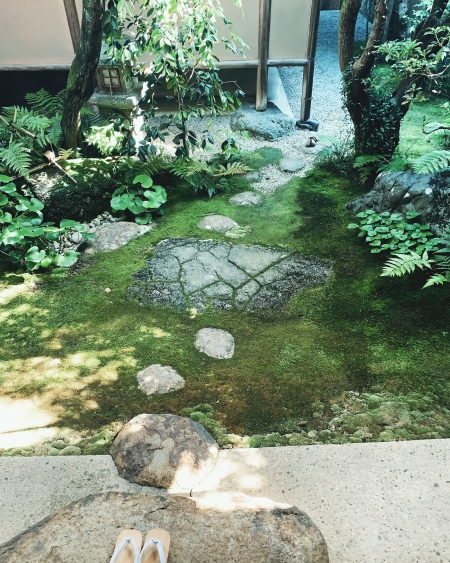余白を見る
最近、余白のことを考えている。余地とか、遊びとかと言うかもしれない。余分なもの、どうでもよいもの、ただ、無いと困るもの、なくてはならないもの。
きりきりで、きれきれで、きつきつで、きっちりしている完全なものに憧れたりする。美しいものや綺麗
なものは大抵完全なものを備えていて、そこに惹かれる。
ただ、完全なものはあまりにも完璧すぎてなじまなく、触れると、拒みたくなる。
余白が主役の長谷川等伯の松林図屏風、これは余白を描いていて、その余白が見るものの感受性を刺激し、あらゆる創造を意識の中で強いる。たがら、見ていると松林の余白の中に、霧や風やその先の景色を感じ、松林が浮かび上がってくる。
余白には何も描かれていない。人によっては未完成に見えるかもしれない。そういう意味で言うと不完全である、この長谷川等伯の松林図屏風は。
ただ、その不完全さがこの松林図屏風に動きや情景を与える。
等伯は松林を墨で描きながら、余白を丹念にあぶり出したように見えた。
"See the margins"
Recently, I'm thinking about margins. It may be called room or play. Extra things, things you don't care, just things you don't need, things you have to do.
I'm drowning in perfect things that are crisp, clean, tight and tight. Beautiful things and beautiful
Things are usually complete and are attracted to it.
However, perfect things are too perfect and unfriendly, and touching them makes them want to refuse.
The margin is the leading figure of Matsubayashi Hasegawa, which draws the margin, stimulates the sensitivity of what the margin sees, and forces all creation in consciousness. When I look at it, in the margin of the pine forest, I feel the mist, the wind, and the scenery beyond that, and the pine forest comes up.
Nothing is drawn in the margin. Some people may seem unfinished. In that sense, it is incomplete, this Hasegawa and other pine forest sketch screen.
However, the imperfection gives movement and a scene to this Matsubayashi maple wind.
It appears that Togashi has carefully drawn out the margin while drawing Matsubayashi with ink.

